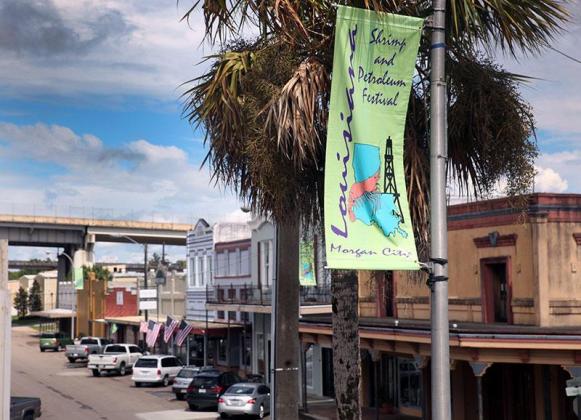
Community leaders say some recommendations to help improve the Morgan City and Berwick economies will be challenging but attainable with a coordinated effort.
A panel of consultants with Urban Land Institute, a nonprofit education and research organization, visited Morgan City and Berwick last week to tour the area and interview people as part of an economic study.
St. Mary Excel, a local community group, commissioned the study with donations from the private and public sectors.
On Friday, panelists presented their preliminary recommendations for economic development and diversification in the area. The panel will release a full written report within three to four months.
Their recommendations included positioning the area as a marine servicing hub, revitalizing downtown and more actively promoting recreational activities to tourists.
Frank Fink, economic development director for St. Mary Parish, said the community development portion “is the key piece” of the study.
“Diversification will come. It just takes a long time to get new companies to move into the area, starting from scratch, that aren’t related to the oilfield,” Fink said.
The most critical issue that the region faces is the need for workforce development because many workers moved away from the area during the downturn, Fink said.
South Louisiana Community College’s Young Memorial Campus in Morgan City is an important asset the area has to facilitate that workforce development, he said.
The community has to use skills, such as welding and metalworking; resources, including the waterways and railways; and businesses that have a need for the area’s resources, Fink said.
The area from David Drive to Sixth Street in Morgan City should be a target to enhance development in the health care sector because it’s one of the area’s fastest growing industries and improves quality of life, Fink said.
Most of the suggestions require a significant amount of money to accomplish.
“A lot of things we already knew what we had to do. The thing that holds us back is the money,” Fink said.
Fink expects some value to come out of the study, and community leaders will probably have a better grasp on what the value might be once the full study is released.
Carrie Stansbury, executive director of the Cajun Coast Visitors and Convention Bureau, responded to the panel’s recommendation to increase clear signage directing tourists in the area.
The bureau, which promotes tourism in St. Mary Parish, just completed a signage plan and should have “gateway” signs on U.S. 90, La. 182 and La. 70 before the end of the year, Stansbury said.
Stansbury thinks that having a vibrant downtown, with 30,000 motorists crossing the Atchafalaya River bridge between Morgan City and Berwick daily, would get people to exit the highway and visit downtown.
Cajun Coast officially are “totally in agreement” to join the effort to improve the downtown areas and will do whatever they can to assist those areas, she said.
Another idea Stansbury discussed with study leaders was the potential for people to offer shrimp boat tours to visitors.
“They would not mind having people on their boats if you didn’t have to deal with the insurance,” Stansbury said.
Officials are looking into a co-operative program that would allow participants to share insurance costs, she said.
Raymond “Mac” Wade, executive director of the Port of Morgan City, said the panel’s recommendations reinforced what port leaders have repeatedly stated but were good to hear from a different view.
“Like we’ve been saying, the waterway is the lifeblood of the area,” Wade said.
The panel recommended that the port use a different approach to trying to ensure the Atchafalaya River and Bar Channel are properly dredged to at least 20 feet deep and 400 feet wide.
Having adequately dredged waterways year round will help local shipyards and fabricators confidently bid on long-term projects, Wade said.
Port officials are in the midst of starting a different approach to dredging with Brice Civil Constructors, a company that plans to use a vessel with a drag arm to agitate the fluid mud, or fluff, which accumulates in the bar channel. The goal is to reduce the density of the sediment so that more vessels can navigate through the channel.
The U.S. Army Corps of Engineers and Brice are close to finishing contract negotiations.
“It will be revolutionary what we will be doing and save a tremendous amount of money,” Wade said.
Officials also have plans to dredge 8 million cubic yards of sand from the Atchafalaya River, just below Morgan City to Eugene Island, he said. Both the bar channel and river dredging projects should finish by the end of the first quarter of 2019.
Berwick Mayor Louis Ratcliff said he was pleased with the participation from the community offering input for the study. Ratcliff was hoping the results would provide an answer to the economic development issues in the area.
“I didn’t hear that, but it may be coming out later in the final report,” Ratcliff said.
However, Ratcliff did hear some good ideas in regard to developing recreation in Berwick, he said.
Ratcliff was listening for a “magic bullet that would solve all our problems,” but community leaders might receive more guidance in the coming months with the release of the full report, he said.
